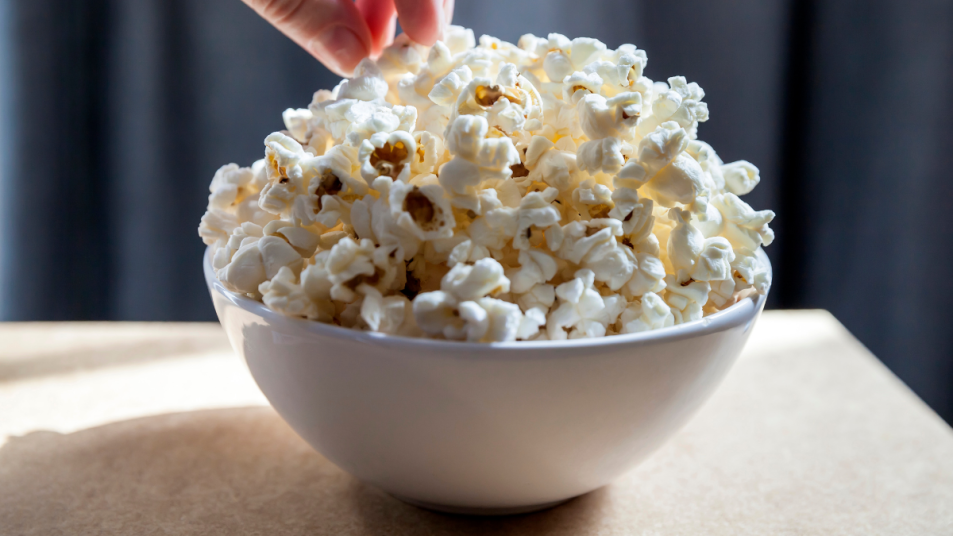One of Your Favorite Snack Foods Can Lower Your Risk of Heart Disease

Did you know your next movie night could also be a win for your heart? It has nothing to do with whatever film you’re watching. Instead, it’s all about everybody’s go-to snack of choice: Popcorn!
Popcorn has a number of other benefits other than being a beloved treat for millions of movie viewers. It turns out that it’s filled with what are called polyphenols, which are plant compounds that rid your body of free radicals. These free radicals typically attack cells and cause long-last damage, even increasing your risk of health problems like cancer and heart disease down the line. However, not only did scientists find that people with diets high in polyphenols have a 46 percent lower risk of heart disease, but popcorn actually has more polyphenols than fruits and vegetables. (Seriously!)
In addition to these incredible heart benefits, polyphenols also may manage blood sugar levels, protect against cancer, maintain healthy digestion, and stimulate brain function. What’s not to love?
Of course, all of the great health advantages from popcorn are really dependent on what you put on it. As tasty as they are, helpings of salt and butter cancel out some of those amazing heart benefits, as do many other special condiments that people put on it. While eating buttery popcorn or kettle corn from time to time won’t do long-term damage, just make sure that neither is your snack of choice, especially if you want to get all you can out of this versatile treat. A sprinkle of something like curry powder, cinnamon, cocoa powder, nutritional yeast, or garlic powder can give you whatever sweet or savory flavor you crave.
The next time you’re looking for a nice afternoon or movie time snack, you can go to your old-school favorite and feel confident that you’re doing something good for your health. Just leave the butter out this time!
















